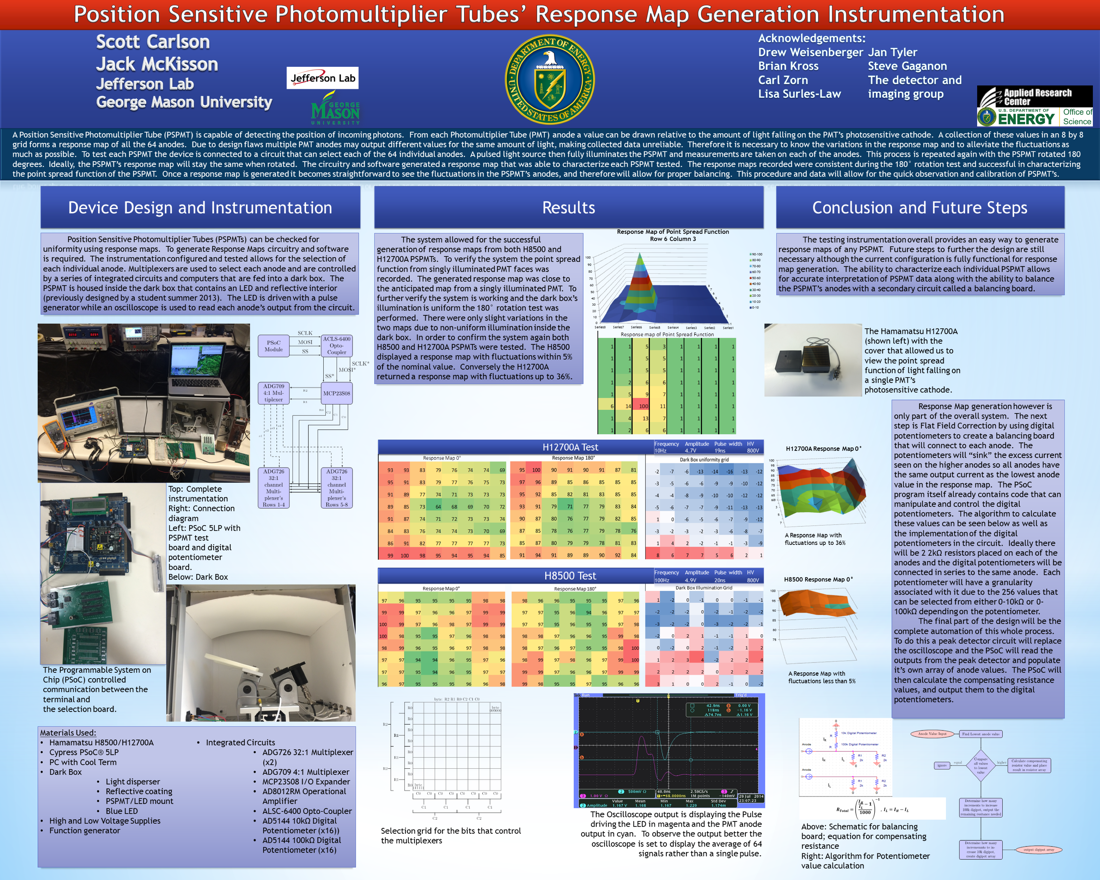Undergraduate Research at Jefferson Lab
Analyzing Response Maps of Position Sensitive Photomultiplier Tubes
Student: Scott Carlson
School: George Mason University
Mentored By: Jack McKisson
A Position Sensitive Photomultiplier Tube (PSPMT) is capable of detecting the position of incoming photons. From each Photomultiplier Tube (PMT) anode a value can be drawn relative to the amount of light falling on the PMT's photosensitive cathode. For a Hamamatsu PSPMT a collection of these values in an 8 by 8 array forms a response map of all the 64 anodes. Due to manufacturing variability the PMT anodes may output different values for the same amount of light, making for a non-uniform response. In many applications it is necessary to know the variations in the response map and to compensate for the non-uniformity. To test each PSPMT the device is connected to a circuit that can select each of the 64 individual anodes. A pulsed light source fully illuminates the PSPMT and measurements are taken on each of the anodes. This process is repeated again sampling each of the anodes. To test the PSPMT's response a Point Spread Distribution (PSD) test is performed along with a 180° rotation test. The circuitry and software generated response maps that were able to characterize each PSPMT tested. The response maps recorded were consistent during the 180° rotation test and successful in characterizing the PSD of the PSPMT. Once a response map is generated it becomes straightforward to see the fluctuations in the PSPMT's anodes, and therefore will allow for proper balancing. This procedure and data will allow for the quick observation and calibration of PSPMT's.

Citation and linking information
For questions about this page, please contact Education Web Administrator.
